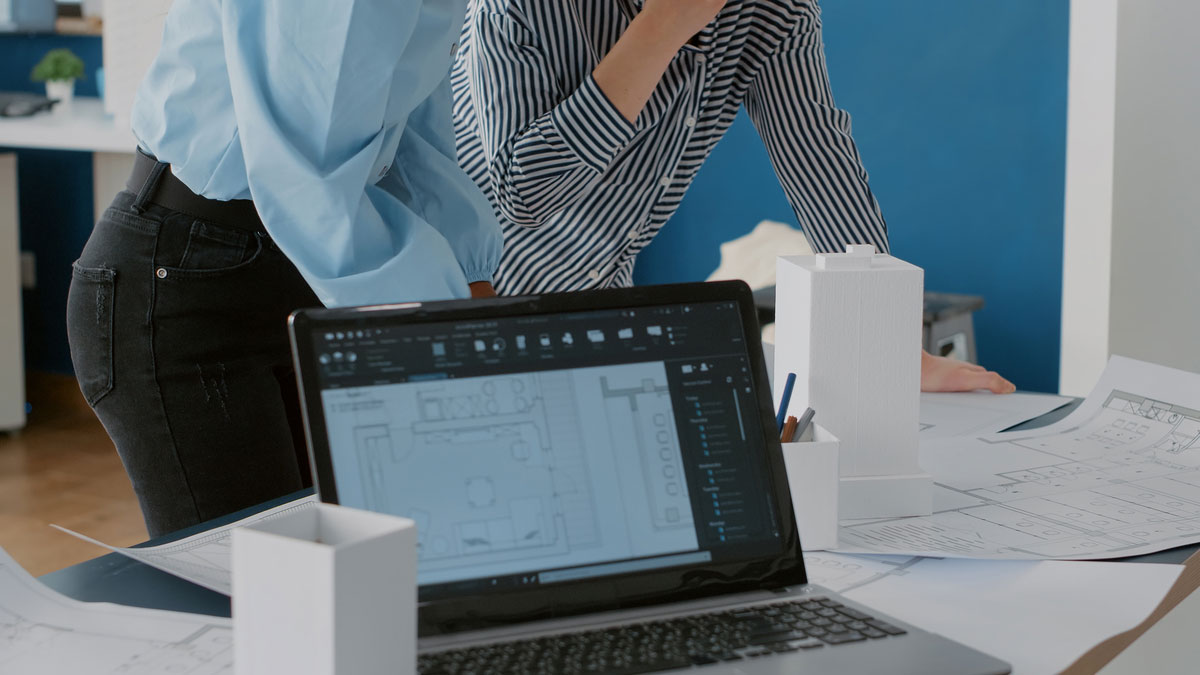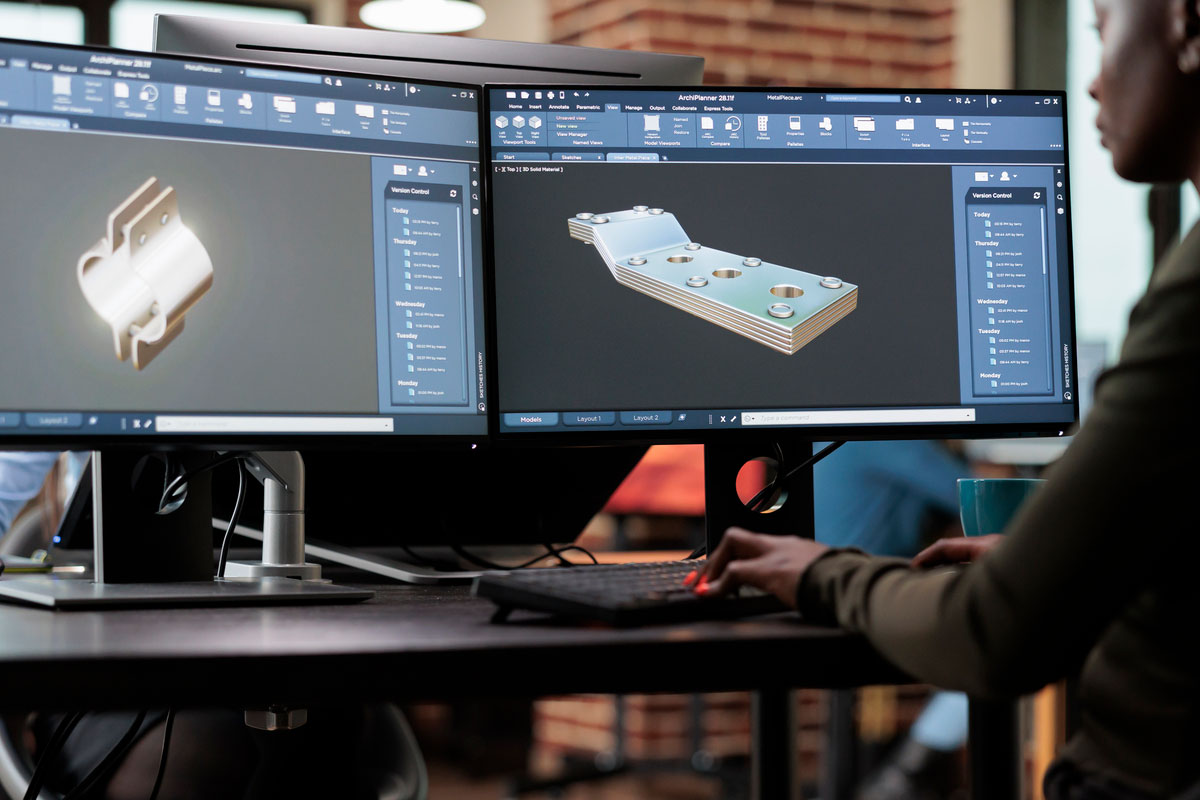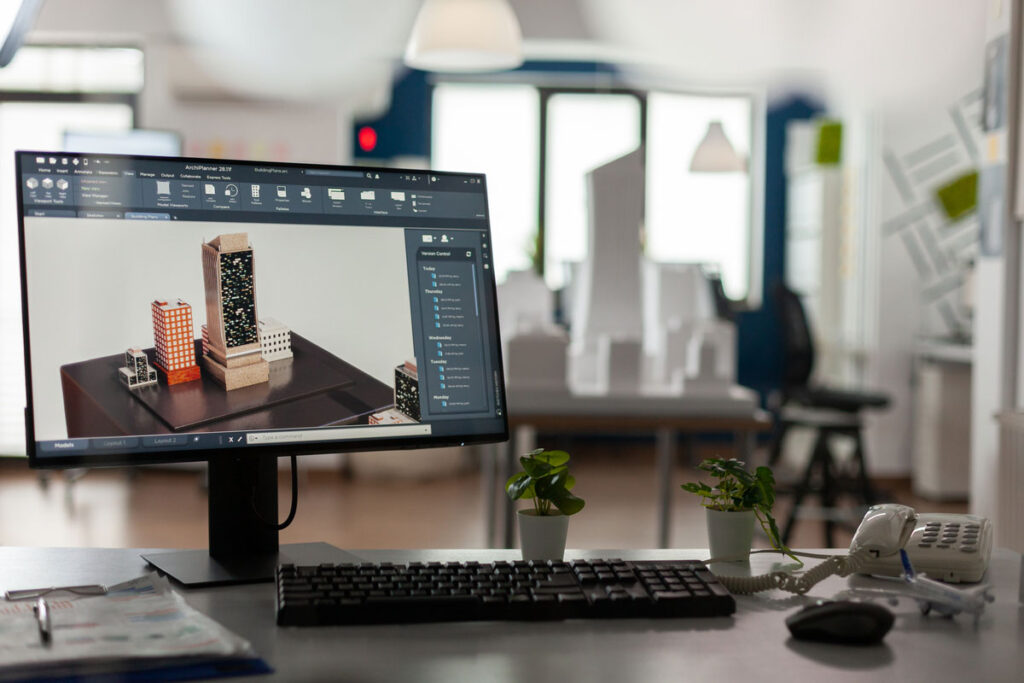Exclusive Neuroject Article: The advent of Scan to Building Information Modeling (Scan to BIM) technology has revolutionized the construction industry, offering a paradigm shift in project planning, design accuracy, and operational efficiency. This innovative technology combines laser scanning and Building Information Modeling (BIM) to create precise digital representations of existing structures or environments, fostering a transformative approach to construction processes. According to industry reports, the global BIM market is projected to reach $10.7 billion by 2025, a testament to the escalating adoption and recognition of its potential benefits.
Scan to BIM benefits fundamentally transforms how construction projects are conceptualized, planned, and executed. Through laser scanning, it captures intricate details of physical spaces, generating high-resolution point cloud data that forms the basis for comprehensive BIM models. This detailed digital representation allows stakeholders to visualize, analyze, and manipulate accurate 3D models that mirror the actual site conditions with remarkable precision.
The transformative impact of Scan to BIM benefits is underscored. It significantly enhances accuracy and precision by providing detailed representations, ensuring exact as-built documentation crucial for renovations or refurbishments. Moreover, it streamlines workflows, expedites data collection and measurements, and enables early clash detection, reducing rework during construction. These benefits, coupled with improved visualization and communication, empower stakeholders to make informed decisions, fostering collaborative efforts among diverse project teams.
As a technology with far-reaching implications, Scan to BIM benefits not only mitigates risks but also contributes to substantial cost reductions by identifying clashes early and minimizing rework and delays. Furthermore, its adaptability and support for sustainable design practices ensure the future-proofing of projects and enable the integration of eco-friendly approaches for long-term environmental impact. In summary, Scan to BIM stands as a transformative force, revolutionizing the construction landscape and setting new standards for efficiency, precision, and sustainability in the industry.
Table of Contents
Understanding Scan to BIM
“Scan to BIM” represents a transformative process in the construction industry, merging the precision of laser scanning technology with the comprehensive insights of Building Information Modeling (BIM). This innovative approach involves capturing intricate details of existing structures or sites through 3D laser scanning, converting the obtained point cloud data into a detailed and navigable BIM model. The process typically involves multiple scans from various angles to capture every detail, resulting in an accurate digital representation of the physical space.
This technology holds immense significance in modern construction due to its ability to create highly accurate and detailed models. Scan to BIM serves as a bridge between the physical and digital realms, offering construction professionals a powerful tool for visualization, analysis, and planning. It allows stakeholders to explore structures virtually, detecting potential clashes or issues before physical construction begins, thereby mitigating risks and reducing costly rework.
Suggested article to read: What is Scan to BIM?
The precision and accuracy achieved through Scan to BIM technology are unparalleled, enabling construction teams to work with highly detailed models that accurately represent existing conditions. This level of accuracy enhances decision-making processes, facilitates better coordination among project stakeholders, and minimizes errors or discrepancies in design and construction phases.
Moreover, the efficiency gains offered by Scan to BIM are remarkable. The technology streamlines workflows, reduces time spent on manual measurements and data collection and expedites the modeling process. With Scan to BIM, project timelines can be significantly optimized, as it allows for quicker identification and resolution of clashes or design conflicts, ultimately contributing to project efficiency and cost savings.
Communication among project teams also sees a notable improvement with Scan to BIM. The visual nature of BIM models derived from scans allows for clearer and more effective communication among architects, engineers, contractors, and clients. Complex structural information becomes easily understandable, fostering better collaboration and informed decision-making throughout the project lifecycle.
In essence, Scan to BIM is not just a technological advancement; it’s a paradigm shift in how the construction industry approaches design, planning, and execution. Its benefits span from enhanced accuracy and efficiency to improved communication and collaboration, making it an indispensable asset in modern construction practices.

Scan to BIM Benefits
Scan to BIM technology brings a multitude of benefits to the construction industry, revolutionizing traditional approaches to design, planning, and execution. Here’s an exploration of its key advantages:
1. Enhanced Accuracy and Precision
Enhanced accuracy and precision within Scan to BIM benefits significantly elevate the quality and reliability of digital models, primarily through:
Detailed Representations: Scan-to-BIM technology leverages advanced laser scanning techniques to meticulously capture spatial data with an unparalleled level of precision. By utilizing high-resolution point cloud data, this process ensures the creation of digital models that mirror the physical reality with astonishing accuracy. Every contour, dimension, and detail of the scanned structures or environments is captured, allowing for the recreation of intricate architectural elements, surfaces, and spatial relationships within the digital realm.
This level of detail offers architects, engineers, and construction professionals a comprehensive and nuanced view of the existing structures, enabling informed decision-making, precise design modifications, and seamless integration of new elements.
Accurate As-Built Documentation: One of the primary advantages of Scan to BIM benefits lies in its ability to deliver exact representations of as-built conditions. This technology facilitates the creation of digital models that serve as a true reflection of existing structures or environments, crucial for renovations, refurbishments, or retrofitting projects. By precisely documenting the current state of a building or site, Scan to BIM ensures that any alterations or additions align precisely with the existing conditions.
This accurate as-built documentation minimizes discrepancies between design intent and on-site reality, reducing errors, unexpected challenges, and costly rework during the construction or renovation phase. It becomes an indispensable asset for architects and contractors, providing a reliable foundation for planning, design modifications, and seamless integration of new elements into the existing structure.
2. Efficiency and Time Savings
Streamlined Workflows: Scan to BIM benefits streamlines the traditionally labor-intensive and time-consuming processes involved in data collection and modeling. By employing laser scanning techniques, it minimizes the need for manual measurements and data collection on-site. This streamlined approach significantly reduces the time and effort typically required for gathering comprehensive data about existing structures or environments.
The detailed point cloud data obtained from scans serves as the foundation for creating BIM models, eliminating the need for extensive manual measurements. This expedites the modeling process, allowing architects, engineers, and designers to focus more on analysis, design modifications, and project planning rather than spending excessive time on data collection and entry.
Clash Detection and Resolution: Another critical aspect of efficiency with Scan to BIM benefits lies in its proactive clash detection capabilities. By overlaying various building system models or proposed design elements onto the precise digital representation of the existing structure, the technology identifies potential clashes or conflicts early in the design phase.
This early detection enables project teams to address clashes promptly, reducing design conflicts and discrepancies before construction begins. Resolving clashes in the digital environment prior to on-site implementation minimizes the need for costly and time-consuming rework during construction. Consequently, this capability not only saves time but also helps in optimizing project schedules and resource allocation, ensuring a smoother construction process and reducing overall project costs.
Suggested article to read: What is BIM and Importance of BIM in Construction?
3. Improved Visualization and Communication
Visual Clarity: Scan-to-BIM technology revolutionizes project visualization by providing highly detailed and accurate representations of structures or environments. It generates 3D models with intricate details captured through laser scans, offering stakeholders a clear and vivid visual understanding of the project. These detailed visualizations allow architects, engineers, clients, and other stakeholders to explore the project virtually.
This visual clarity aids in better comprehension of design intricacies, spatial relationships, and existing conditions. It enables stakeholders to visualize the project’s scope, identifying potential challenges or opportunities with greater precision. Such comprehensive visualizations empower informed decision-making throughout the project lifecycle, from initial planning to final execution.
Clear Communication: The technology’s ability to translate complex data into visually intuitive models enhances communication among project participants. The detailed and accurate digital representations generated by Scan to BIM benefits serve as a common language, facilitating clearer and more effective communication across disciplines. Complex technical information, design concepts, or construction plans are presented in a visual format that is easily understandable for diverse stakeholders, including non-technical team members and clients.
This clarity in communication streamlines discussions, enabling all parties to have a shared understanding of project aspects. It fosters collaborative discussions, allows for quicker approvals, and facilitates smoother coordination among different teams and stakeholders. Ultimately, this clear and visual communication minimizes misinterpretations, reduces errors, and ensures alignment in project goals and expectations.
4. Enhanced Coordination and Collaboration
Interdisciplinary Coordination: Scan-to-BIM technology acts as a catalyst for improved interdisciplinary coordination by centralizing project data and providing a unified model accessible to all stakeholders. This centralized model serves as a comprehensive repository of information, incorporating detailed data from various sources, including architectural, structural, mechanical, and electrical aspects. By offering a holistic view of the project, it enables different teams and disciplines to work collaboratively within a singular, integrated platform.
This synergy allows for enhanced coordination, ensuring that all project elements align seamlessly and minimizing conflicts or discrepancies between different disciplines. The accessibility of a centralized model fosters an environment where interdisciplinary teams can synchronize their efforts, share insights, and collaborate effectively throughout the project lifecycle.
Improved Collaboration: Scan to BIM benefits fosters a culture of collaboration among project participants by providing a common platform for communication, discussions, and revisions. The digital model derived from scans serves as a shared reference point for architects, engineers, contractors, and clients, enabling them to engage in collaborative discussions and decision-making processes.
This shared platform facilitates transparent communication, allowing stakeholders to exchange feedback, propose modifications, and make informed decisions collaboratively. By providing real-time access to project data and design iterations, it encourages active participation and input from all stakeholders, promoting a sense of ownership and alignment with project objectives. This enhanced collaboration not only streamlines workflows but also ensures that all parties are working towards a unified vision, resulting in more efficient project delivery and greater stakeholder satisfaction.

5. Risk Mitigation and Cost Reduction
Risk Identification: Scan to BIM benefits plays a pivotal role in risk mitigation by identifying potential risks and clashes at an early stage of the project lifecycle. Integrating precise as-built information with proposed designs enables the identification of clashes or discrepancies between existing structures and new design elements. Detecting these conflicts in the digital environment allows project teams to proactively address and mitigate risks before they manifest on-site.
This early risk identification minimizes the likelihood of construction issues, errors, or conflicts during implementation, reducing the probability of costly modifications or delays. Consequently, this proactive risk management ensures a smoother construction process, enhances safety, and preserves project timelines and budgets.
Cost Savings: The technology’s ability to mitigate risks and clashes contributes significantly to cost reduction throughout the construction process. By identifying and resolving clashes digitally before construction commences, Scan to BIM benefits minimizes the need for costly on-site modifications or rework. This proactive approach reduces material wastage, labor-intensive rework, and potential disruptions, leading to substantial cost savings.
Moreover, the technology streamlines workflows optimizes resource utilization and minimizes project delays, all of which collectively contribute to overall cost efficiency. The early detection and resolution of conflicts or errors not only prevent additional expenses but also ensure that the project progresses smoothly within budgetary constraints, ultimately delivering a cost-effective and successful construction outcome.
6. Future-Proofing and Adaptability
Adaptability to Changes: Scan to BIM benefits offer unparalleled adaptability by allowing seamless updates and modifications to the digital model as the project evolves or changes occur. Throughout the project lifecycle, as new information emerges or design alterations are made, the digital model can be easily updated and synchronized with the latest data. This flexibility ensures that the BIM model accurately reflects the current state of the project at any given time.
Project teams can incorporate revisions, design updates, or modifications effortlessly, enabling them to adapt to evolving project requirements or unforeseen changes without disrupting the overall workflow. This adaptability ensures that the digital model remains dynamic and aligned with the project’s evolving needs, effectively future-proofing the design against uncertainties.
Data Accessibility: Beyond the construction phase, Scan to BIM benefits provide a robust and comprehensive database that extends its usefulness into post-construction phases such as facility management, renovations, or expansions. The detailed and accurate digital model, enriched with precise as-built information, serves as a valuable asset for facility managers, maintenance teams, or future renovation projects. It becomes an accessible repository of essential information about the building or structure, including maintenance schedules, equipment details, spatial configurations, and utility locations.
This data accessibility streamlines facility management processes simplifies renovations or retrofitting initiatives, and facilitates efficient decision-making for future expansions or modifications. The comprehensive and easily accessible data within the BIM model ensures that the project’s value extends well beyond its construction phase, providing long-term benefits and adaptability for future requirements.
Suggested article to read: Sustainable Construction; Comprehensive Guide
7. Sustainable Practices
Supporting Sustainable Designs: Scan to BIM benefits serve as a cornerstone in supporting sustainable design practices within construction projects by offering comprehensive insights and analysis that drive energy efficiency and resource optimization. Through the integration of detailed point cloud data and BIM models, this technology provides a robust platform for architects, engineers, and designers to evaluate and implement sustainable design strategies effectively.
The detailed digital representation of existing structures or environments allows professionals to conduct thorough analyses of energy consumption, daylighting, thermal performance, and overall building efficiency. By simulating different scenarios within the digital environment, stakeholders can assess the potential impact of sustainable design interventions, such as renewable energy integration, improved insulation, or optimized HVAC systems. This analytical capability empowers decision-makers to identify and implement strategies that enhance the building’s sustainability without compromising functionality or aesthetics.
Furthermore, Scan to BIM benefits facilitate the assessment of material usage and lifecycle impacts, enabling informed decisions regarding sustainable material choices and construction methodologies. By providing a holistic view of the project’s environmental footprint, it encourages the adoption of eco-friendly practices and contributes to the overall reduction of the building’s environmental impact.
In essence, the technology’s ability to offer comprehensive insights and analyses plays a pivotal role in promoting sustainable design practices, allowing construction projects to align with environmental goals while ensuring optimal functionality and efficiency.
Scan to BIM technology is a game-changer in the construction landscape, offering unparalleled precision, efficiency, and collaboration opportunities. Its multifaceted benefits contribute to better project outcomes, reduced risks, and improved communication, underscoring its indispensable role in modern construction projects.
Case Studies
Here are a few case studies showcasing successful implementations and benefits of Scan to BIM technology in real-world construction projects:
1. Tate Modern Extension, London, UK
- Challenge: The extension project required a seamless integration of modern architecture with the existing historic structure of the Tate Modern museum.
- Solution: Scan to BIM technology was employed to capture precise measurements of the site and existing structures.
- Benefits: Accurate 3D models derived from scans allowed architects to visualize and plan the extension while preserving the historical integrity of the site. Clash detection aided in identifying potential design conflicts, leading to timely modifications and ensuring smooth construction.
2. Barcelona Metro Line 9, Spain
- Challenge: The complexity of constructing underground metro tunnels demanded precise planning and coordination to avoid clashes and construction delays.
- Solution: Laser scanning and Scan to BIM technology were utilized to capture detailed as-built information of existing underground structures and utilities.
- Benefits: Accurate BIM models derived from scans facilitated clash detection and coordination among various engineering disciplines. This minimized clashes with existing utilities, reduced construction conflicts, and improved overall construction efficiency.
3. Sydney Opera House Renewal, Australia
- Challenge: Renovation and renewal of the iconic Sydney Opera House required precise documentation of the existing structure and its intricate details.
- Solution: Laser scanning technology was employed to capture high-resolution point cloud data of the entire site.
- Benefits: Scan to BIM integration enabled accurate 3D models that preserved the original design intent. The models facilitated comprehensive documentation of existing conditions, aiding architects and engineers in planning renovations and restoration work with precision.
4. Renovation of Historic Structures, Various Locations
- Challenge: Renovating historic buildings and structures while maintaining authenticity and historical accuracy.
- Solution: Scan to BIM technology was utilized to capture intricate details and dimensions of heritage sites and structures.
- Benefits: Accurate BIM models derived from scans helped preservationists and restoration experts in assessing existing conditions, identifying deteriorations, and planning renovation work that adhered to historical accuracy, ensuring preservation of cultural heritage.
These case studies demonstrate how Scan to BIM technology has been instrumental in various construction projects, enabling accurate modeling, clash detection, preservation of historical sites, and efficient renovation planning. The technology’s versatility and precision have significantly contributed to successful project outcomes in diverse construction scenarios.

Challenges and Considerations
Implementing Scan to BIM technology, while offering substantial benefits, also presents certain challenges and considerations in the construction industry:
1. Cost and Investment:
- Initial Investment: The procurement of scanning equipment, software, and training for personnel incurs upfront costs that might be substantial for some firms.
- Ongoing Expenses: Maintenance, software updates, and skilled personnel can contribute to ongoing operational expenses.
2. Expertise and Training:
- Skilled Workforce: Proficient personnel capable of operating scanning equipment and handling BIM software are essential. Training existing staff or hiring skilled professionals might pose challenges.
- Technological Know-How: Ensuring the team is adept at handling and interpreting complex scanning data and BIM models.
3. Integration with Existing Workflows:
- Adapting Workflows: Integrating Scan to BIM processes within existing project workflows might require significant adjustments in project planning and execution.
- Compatibility Issues: Ensuring compatibility of the Scan to BIM software with other tools and systems used in the project.
4. Data Management and Processing:
- Handling Large Data Sets: Managing and processing extensive point cloud data obtained from laser scanning can be resource-intensive and time-consuming.
- Data Accuracy: Ensuring the accuracy of scanned data and its conversion into BIM models is crucial for project success.
5. Standardization and Collaboration:
- Industry Standards: Aligning with industry standards and protocols for data exchange, file formats, and model compatibility across stakeholders.
- Collaboration Challenges: Coordinating between multiple stakeholders and disciplines, especially when using different software versions or varying levels of technological proficiency.
6. Legal and Privacy Concerns:
- Data Privacy: Ensuring compliance with data privacy regulations, especially when scanning existing properties or structures.
- Intellectual Property: Addressing concerns related to ownership and sharing of scanned data and BIM models among project stakeholders.
7. Project-Specific Challenges:
- Site Conditions: Adapting scanning methodologies to challenging site conditions such as limited accessibility, extreme environments, or intricate structures.
- Accuracy in Complex Structures: Ensuring precise scanning and modeling in complex architectural or engineering structures with intricate details.
Addressing these challenges requires thorough planning, investment in technology and training, collaboration among stakeholders, and a willingness to adapt workflows. While Scan to BIM offers immense benefits, navigating these challenges is crucial for successful implementation and maximizing its potential in construction projects.
Future Trends and Developments
The evolution of Scan to BIM technology continues to shape the future of the construction industry, paving the way for several noteworthy trends and developments:
1. Enhanced Automation and Artificial Intelligence (AI)
- Automated Processing: Advancements in AI and machine learning facilitate automated processing of scan data, expediting point cloud conversion to BIM models.
- AI-Driven Analysis: AI algorithms for data analysis offer predictive insights, aiding in efficient decision-making and project planning.
2. Augmented Reality (AR) and Virtual Reality (VR) Integration
- AR/VR Applications: Integration of AR and VR technologies for enhanced visualization and immersive experiences, enabling stakeholders to interact with BIM models for better understanding and decision-making.
3. Cloud-Based Solutions
- Cloud Integration: Cloud-based solutions for Scan to BIM offer enhanced accessibility, enabling real-time collaboration among geographically dispersed teams.
- Scalability and Data Sharing: Scalable cloud platforms facilitate seamless data sharing and collaboration, improving project coordination.
4. Expansion of IoT and Sensor Integration
- IoT Devices: Integration of IoT sensors for continuous monitoring of construction sites, enabling real-time updates and data collection to feed into BIM models.
- Smart Construction Sites: Creation of ‘smart’ construction sites through IoT integration, enhancing safety, efficiency, and project management.
5. Continued Development of Mobile Scanning Technologies
- Mobile Scanning Solutions: Advancements in handheld and mobile scanning devices offering portability and ease of use, allowing for quick and efficient data capture in various environments.
6. Focus on Sustainability and Energy Efficiency
- Green Building Practices: Integration of sustainability parameters within BIM models to optimize energy efficiency and resource utilization.
- Life Cycle Analysis: Expanding BIM capabilities to include life cycle analysis, enabling assessment of environmental impact throughout a building’s lifespan.
7. Expansion of BIM for Facility Management (FM)
- FM Integration: Further integration of BIM models with facility management systems, offering a comprehensive database for ongoing maintenance, operations, and renovations.
8. 5D and 6D BIM Implementation
- Expanded BIM Capabilities: Advancement from 3D and 4D BIM to 5D (cost estimation) and 6D (sustainability and lifecycle data) BIM, offering comprehensive project management capabilities.
9. Continued Standardization and Collaboration
- Industry Standards: Continued efforts toward standardization and interoperability among BIM software and data formats to enhance collaboration and data exchange among stakeholders.
The future of Scan to BIM lies in its integration with cutting-edge technologies, driving efficiency, sustainability, and collaboration in the construction industry. Embracing these trends and developments will shape the industry’s trajectory, redefining project workflows and enhancing the overall project lifecycle.

Conclusion
The advent of Scan to Building Information Modeling (Scan to BIM) technology has revolutionized the construction industry, offering a paradigm shift in project planning, design accuracy, and operational efficiency. This innovative technology combines laser scanning and Building Information Modeling (BIM) to create precise digital representations of existing structures or environments, fostering a transformative approach to construction processes. According to industry reports, the global BIM market is projected to reach $10.7 billion by 2025, a testament to the escalating adoption and recognition of its potential benefits.
Scan to BIM benefits fundamentally transforms how construction projects are conceptualized, planned, and executed. Through laser scanning, it captures intricate details of physical spaces, generating high-resolution point cloud data that forms the basis for comprehensive BIM models. This detailed digital representation allows stakeholders to visualize, analyze, and manipulate accurate 3D models that mirror the actual site conditions with remarkable precision.
The transformative impact of Scan to BIM is underscored by its multifaceted advantages. It significantly enhances accuracy and precision by providing detailed representations, ensuring exact as-built documentation crucial for renovations or refurbishments. Moreover, it streamlines workflows, expedites data collection and measurements, and enables early clash detection, reducing rework during construction. These benefits, coupled with improved visualization and communication, empower stakeholders to make informed decisions, fostering collaborative efforts among diverse project teams.
As a technology with far-reaching implications, Scan to BIM benefits not only mitigates risks but also contributes to substantial cost reductions by identifying clashes early and minimizing rework and delays. Furthermore, its adaptability and support for sustainable design practices ensure the future-proofing of projects and enable the integration of eco-friendly approaches for long-term environmental impact. In summary, Scan to BIM stands as a transformative force, revolutionizing the construction landscape and setting new standards for efficiency, precision, and sustainability in the industry.
Suggested article for reading:
The Ultimate Guide to IoT Sensor
15 Best Project Management Software of 2023
Resources:
Autodesk | NavVis | Voxelgrid | Constructible | aurivus | novatr
For all the pictures: Freepik



